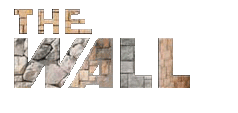In the bustling Portland metro area, where the coffee is as fresh as the drizzle, homeowners often face the Sisyphean task of maintaining a lush, green lawn. However, for those who’d rather spend their weekends exploring the Rose City than wrestling with a lawnmower, synthetic lawns offer an appealing alternative. Let’s break down the long-term durability and return on investment of making the switch from traditional grass to a synthetic lawn.
Why Go Synthetic?
First off, synthetic lawns look remarkably like the real thing—without the wilting during those rare Oregon heatwaves or the mudslides during our more familiar rainy months. For busy homeowners, the appeal of synthetic grass is straightforward: it offers the pristine look of a well-manicured lawn without the time-consuming maintenance. Imagine reclaiming your weekends from the clutches of yard work!
Durability That Stands the Test of Time
Synthetic lawns are not just about good looks; they’re built to last. Most high-quality synthetic grass products come with a warranty of 15 to 20 years, but with proper care, they can last even longer. They stand up well against heavy rain, intense sun, and even the playful roughhousing of your pets. In terms of resilience, synthetic grass laughs in the face of natural turf challenges, and it doesn’t even need to catch its breath.
The Costs: Upfront and Over Time
Admittedly, the initial cost of installing synthetic grass is higher than seeding or laying sod for a natural lawn. On average, homeowners might spend between $5 and $20 per square foot on the installation, depending on the quality of the turf and the complexity of the landscaping. While the sticker shock can be real, it’s important to consider the investment over the lifetime of the product.
With natural grass, expenses include regular watering, fertilizing, weed control, and mowing. Over a 10-year period, maintaining a natural lawn can cost anywhere from $10,000 to $20,000 or more, depending on the size of your yard and the intensity of maintenance. In contrast, synthetic lawns require minimal upkeep—just occasional rinsing and debris removal. This can reduce maintenance costs to a fraction of those associated with natural grass, especially when you factor in the rising costs of water in our region.
Return on Investment
Beyond saving on maintenance costs, synthetic lawns also enhance property value. A neat, low-maintenance yard is a strong selling point for potential buyers, who may be drawn to the idea of a beautiful lawn that demands minimal effort. Additionally, synthetic lawns are environmentally friendly—they conserve water, reduce pesticide use, and eliminate the need for gas-powered lawn equipment. This can be a key selling point in environmentally conscious Portland.
A Green Investment—In Every Sense
Switching to a synthetic lawn is not just a financial decision; it’s a lifestyle choice. For homeowners in the Portland area who prefer hiking in the Gorge over trimming grass edges, synthetic lawns offer a practical, beautiful, and durable alternative. It’s an upfront investment that pays dividends in time, money, and peace of mind—leaving you free to enjoy the best of the Pacific Northwest, one rain-free lawn at a time.
So, if you’re looking to invest in more weekend adventures and fewer weekend chores, consider a synthetic lawn as your next home improvement project. It’s practical, environmentally savvy, and, let’s face it, it’s nice to have a lawn that stays green all year round without your efforts. Why not let your lawn work for you, instead of the other way around?
Interested in learning more? Call The Wall to schedule a free on-site evaluation and estimate at (503) 735-9255 or email info@bythewall.com.
